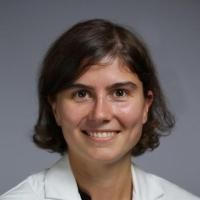Trends in Dialysis Industry Consolidation After Medicare Payment Reform, 2006-2016.
Date
2021-11
Journal Title
Journal ISSN
Volume Title
Repository Usage Stats
views
downloads
Citation Stats
Attention Stats
Abstract
Importance
The dialysis industry is highly concentrated, with large dialysis organizations now providing dialysis for more than 85% of patients with kidney failure in the United States. In 2011, Medicare introduced a new Prospective Payment System (PPS) for end-stage kidney disease, which bundled payment for dialysis care into 1 payment per patient. Trends in dialysis facility consolidation after the PPS went into effect are unknown.Objective
To determine whether the introduction of the PPS in 2011 was associated with an acceleration in acquisitions and closures of small dialysis chains (<20 facilities) and independently owned facilities.Design setting and participants
This retrospective cohort study included all Medicare-certified independent or small chain-affiliated dialysis facilities in the continental US between 2006 and 2016. Data were obtained from Medicare and the US Renal Data System and were analyzed in 2020.Exposures
The PPS.Main outcomes and measures
Discrete time hazard models were used to estimate the odds of acquisition and closure before the PPS (2006-2010) vs after the PPS (2011-2016). Analyses controlled for facility, market, and regional demographic characteristics. The average predicted marginal probabilities of acquisition and closure over time were estimated.Results
The proportion of small chain-affiliated and independently owned facilities declined from 29% (1383 of 4750 facilities) in 2006 to 15% (1038 of 6738) in 2016. Among 13 481 facility-years, 6352 (47%) were for profit, and mean (SD) census was 68 (59) patients. Overall, 3286 (24%) facilities opened during the observation period. The proportion of acquisitions that occurred each year varied from 1.1% (12 of 1065 facilities in 2015) to 7.2% (86 of 1192 facilities in 2012), while closures varied from 0.8% (9 of 1065 facilities in 2015) to 2.2% (28 of 1286 facilities in 2010), making both fairly rare. There was a 3.48 higher odds of acquisition in the post-PPS period compared with the pre-PPS period (95% CI, 1.62-7.47; P = .001). The odds of closure before and after the PPS were not statistically significantly different (odds ratio, 2.03; 95% CI, 0.61-6.73; P = .25). Facilities that opened during the observation period had a 7.2% higher predicted probability of acquisition compared with older facilities (95% CI, 5.4%-9.0%; P < .001).Conclusions and relevance
In this cohort study of continental US Medicare-certified dialysis facilities, small-chain and independently owned facilities retained a declining share of the dialysis market. Further research should evaluate the effect of continued dialysis market consolidation on patient access, health care utilization, and clinical outcomes.Type
Department
Description
Provenance
Citation
Permalink
Published Version (Please cite this version)
Publication Info
Sloan, Caroline E, Abby Hoffman, Matthew L Maciejewski, Cynthia J Coffman, Justin G Trogdon and Virginia Wang (2021). Trends in Dialysis Industry Consolidation After Medicare Payment Reform, 2006-2016. JAMA health forum, 2(11). p. e213626. 10.1001/jamahealthforum.2021.3626 Retrieved from https://hdl.handle.net/10161/26699.
This is constructed from limited available data and may be imprecise. To cite this article, please review & use the official citation provided by the journal.
Collections
Scholars@Duke

Caroline Sloan
Caroline is a General Internist. Her clinical interests are in primary care for vulnerable populations and patients with multiple chronic conditions. Her research interests focus on the role that money plays in medical decision-making. She currently studies financial barriers to care for patients with multiple chronic conditions, the impact of recent price transparency regulations, and the ways that doctors and patients communicate about and make decisions based on out-of-pocket costs.

Matthew Leonard Maciejewski
Matt Maciejewski, PhD is a Professor in the Department of Population Health Sciences. He is also a Senior Research Career Scientist and Director of the Non-randomized Design Lab in the Center of Innovation to Accelerate Discovery and Practice Transformation at the Durham VA Medical Center. Matt also holds Adjunct Professor appointments in the Schools of Public Health and Pharmacy at the University of North Carolina at Chapel Hill.
He has received funding from NIDDK, NIDA, CMS, AHRQ, VA HSR&D, and the RWJ Foundation to conduct evaluation of long-term clinical and economic outcomes of surgical interventions, behavioral interventions and Medicare program/policy changes on patients with obesity or cardiometabolic conditions. He is also interested in methods for addressing unobserved confounding in observational studies. Matt evaluated the first-ever population-based implementation of value-based insurance design and led the first-ever linkage of lab results and Medicare FFS claims. He has published over 250 papers in peer-reviewed journals such as JAMA, JAMA Internal Medicine, JAMA Surgery, Annals of Internal Medicine, Health Economics, Medical Care, Health Services Research, Journal of Clinical Epidemiology and Diabetes Care.
Areas of expertise: Health Services Research, Health Economics, Health Policy, Multimorbidity

Cynthia Jan Coffman
Unless otherwise indicated, scholarly articles published by Duke faculty members are made available here with a CC-BY-NC (Creative Commons Attribution Non-Commercial) license, as enabled by the Duke Open Access Policy. If you wish to use the materials in ways not already permitted under CC-BY-NC, please consult the copyright owner. Other materials are made available here through the author’s grant of a non-exclusive license to make their work openly accessible.
